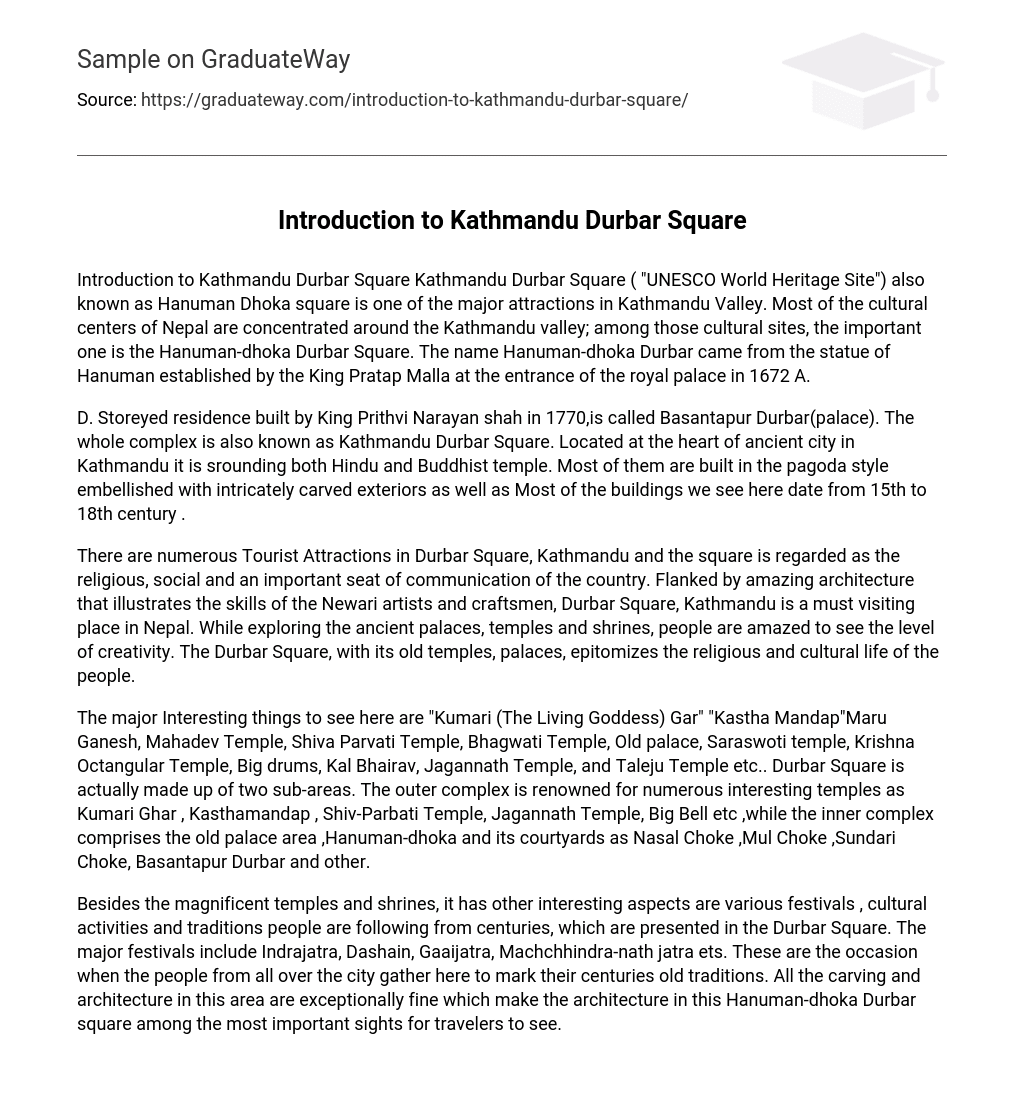Kathmandu Durbar Square, also referred to as Hanuman Dhoka square, is a UNESCO World Heritage Site. It holds great cultural significance within the Kathmandu Valley, home to numerous cultural centers in Nepal. One of the valley’s most prominent cultural sites is Hanuman-dhoka Durbar Square, named after a statue of Hanuman commissioned by King Pratap Malla in 1672 and placed at the entrance of the royal palace.
The Basantapur Durbar (palace) was built in 1770 by King Prithvi Narayan Shah. It is a notable residence within the Kathmandu Durbar Square, situated in the historic city of Kathmandu. The palace is encircled by numerous Hindu and Buddhist temples, predominantly designed in the pagoda style. These temples showcase intricate carvings on their exteriors that originate from the 15th to the 18th century.
Durbar Square in Kathmandu is a significant attraction for tourists in Nepal as it serves as a religious, social, and communication hub. Skilled Newari artists and craftsmen have created stunning architecture at this location, making it an essential destination within the country. The square’s ancient palaces, temples, and shrines captivate visitors with their remarkable creativity. This historic site exemplifies the religious and cultural essence of the people through its old temples and palaces.
The main attractions to see in this place are “Kumari (The Living Goddess) Gar”, “Kastha Mandap”, Maru Ganesh, Mahadev Temple, Shiva Parvati Temple, Bhagwati Temple, Old palace, Saraswoti temple, Krishna Octangular Temple, Big drums, Kal Bhairav, Jagannath Temple, and Taleju Temple etc. Durbar Square is composed of two areas. The outer complex has famous temples such as Kumari Ghar, Kasthamandap, Shiv-Parbati Temple, Jagannath Temple, Big Bell etc., whereas the inner complex consists of the old palace area, Hanuman-dhoka and its courtyards like Nasal Choke, Mul Choke, Sundari Choke, Basantapur Durbar and others.
In addition to the impressive temples and shrines, the Durbar Square also showcases various festivals, cultural activities, and traditions that have been followed for centuries. Some of the major festivals celebrated here include Indrajatra, Dashain, Gaaijatra, and Machchhindra-nath jatra. During these occasions, people from all over the city come together to celebrate their age-old traditions. The intricate carvings and architecture in this area are exceptionally well-crafted, making Hanuman-dhoka Durbar Square a must-see attraction for travelers.





